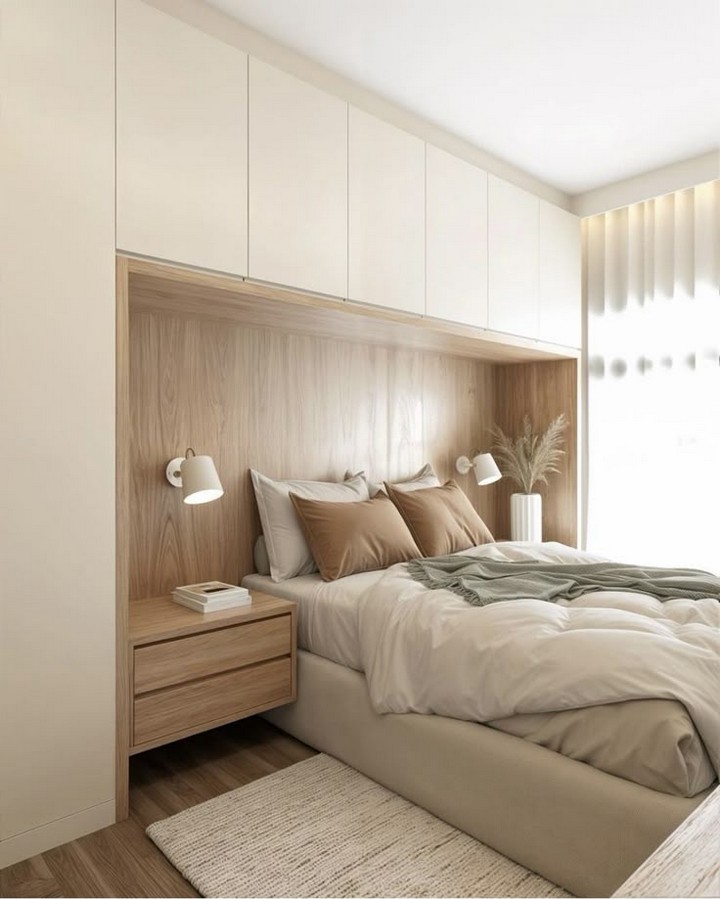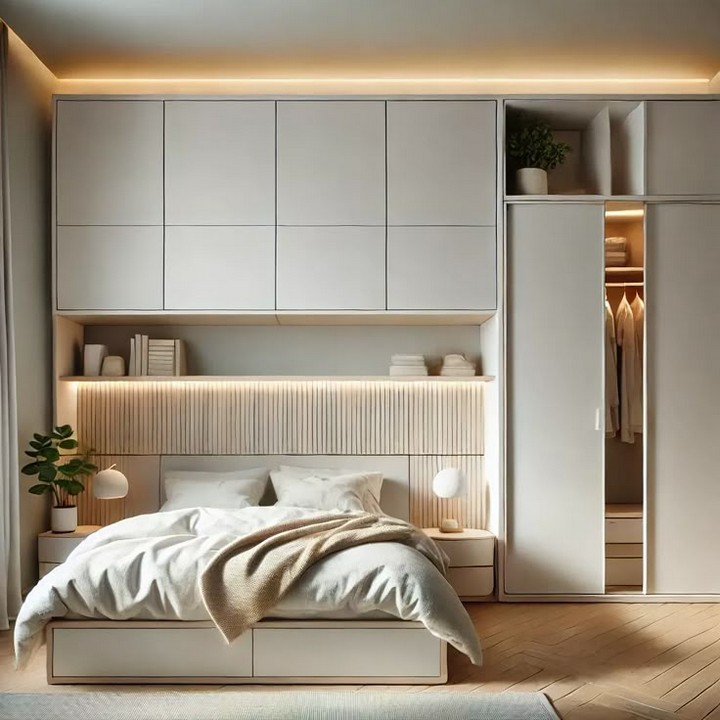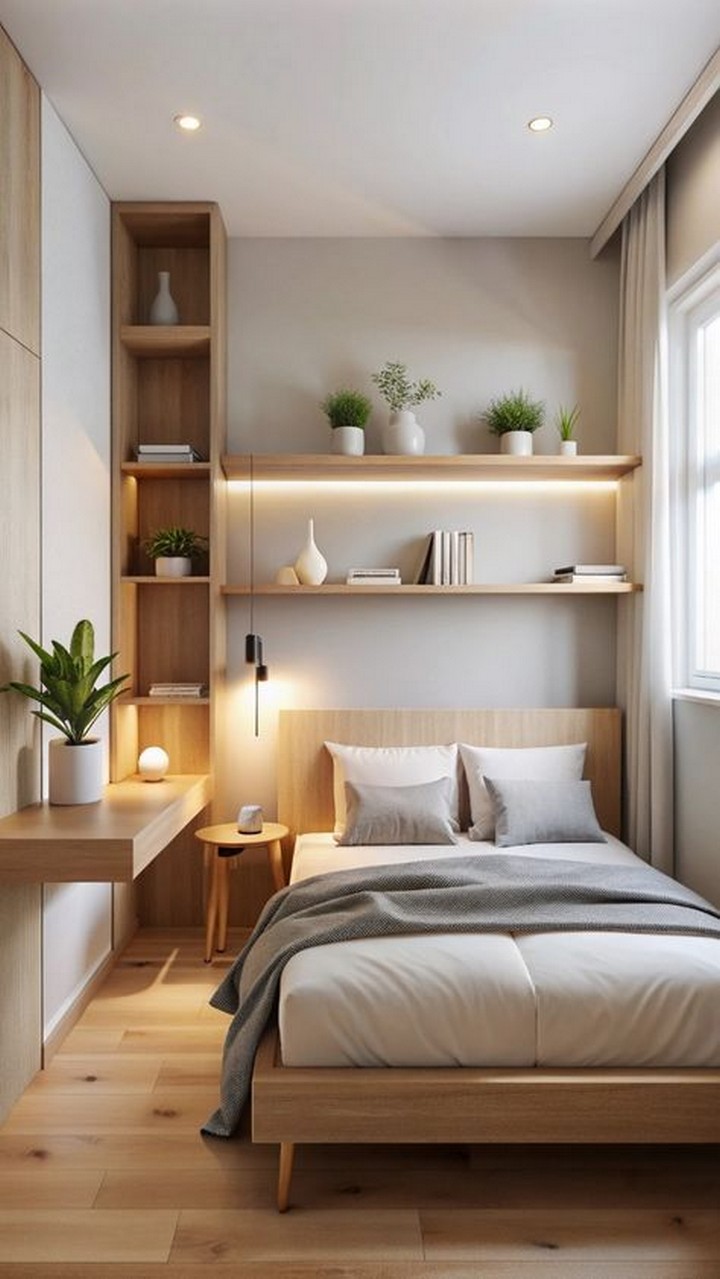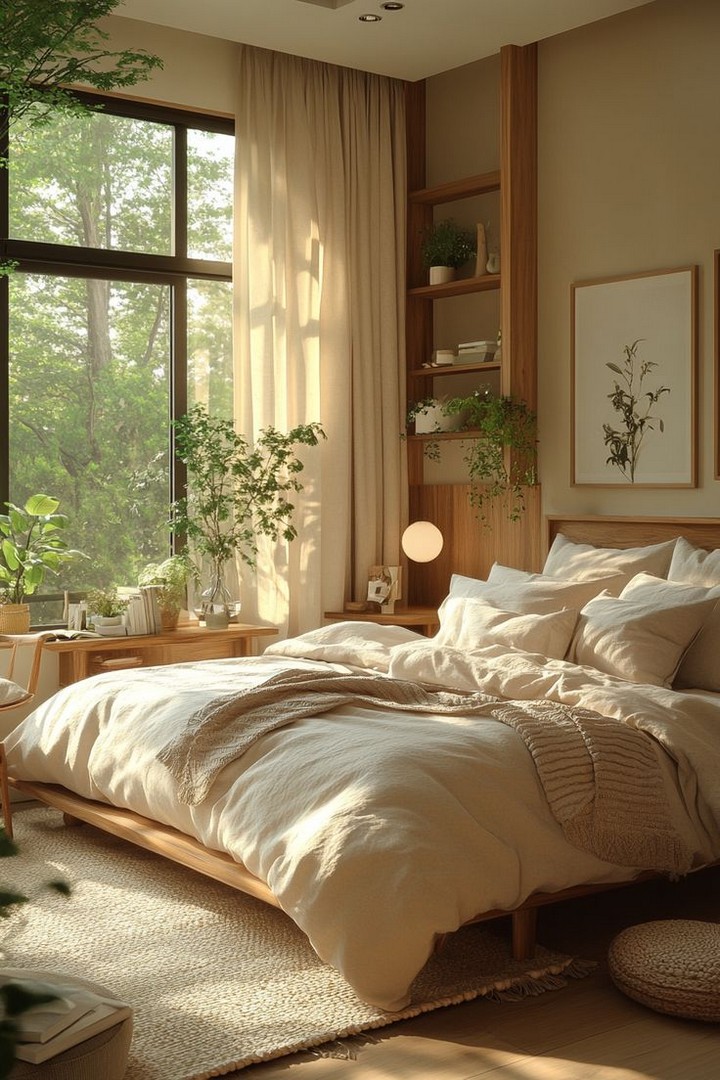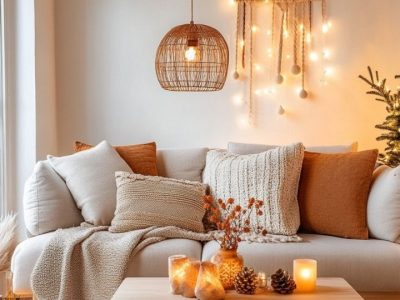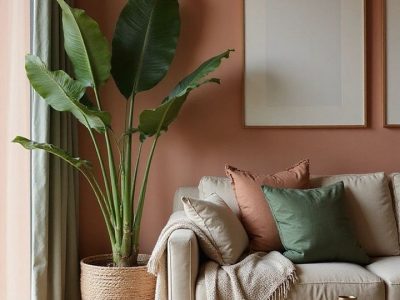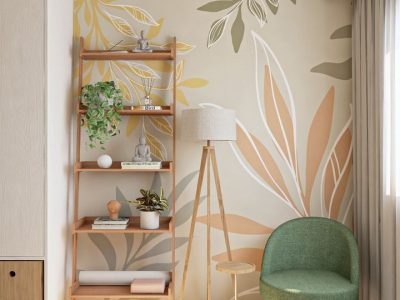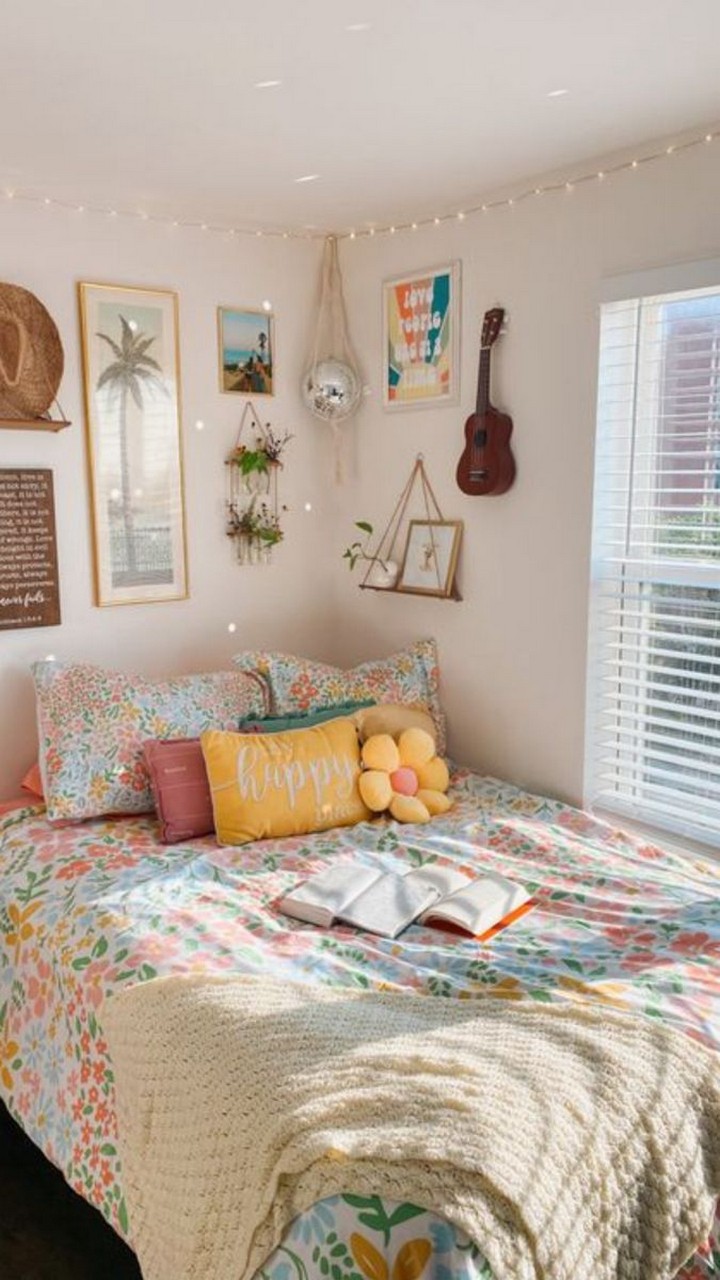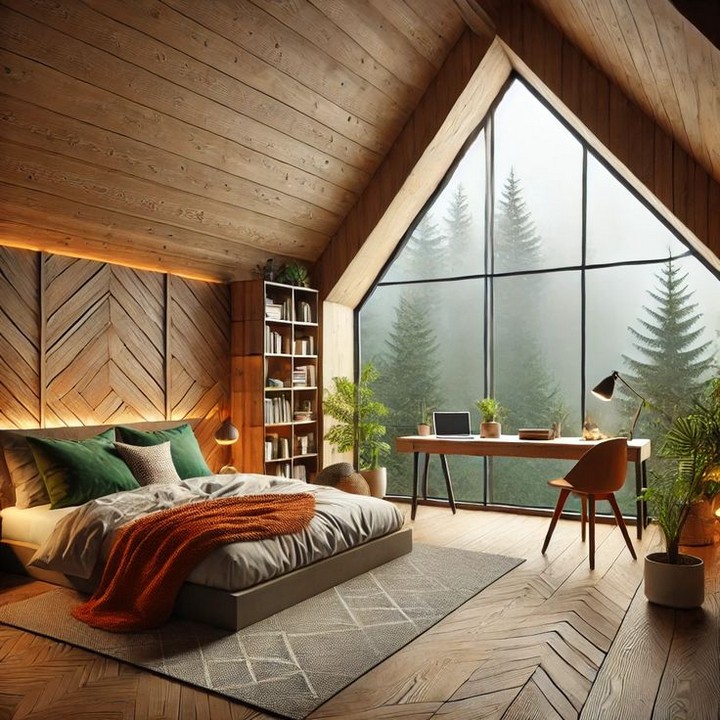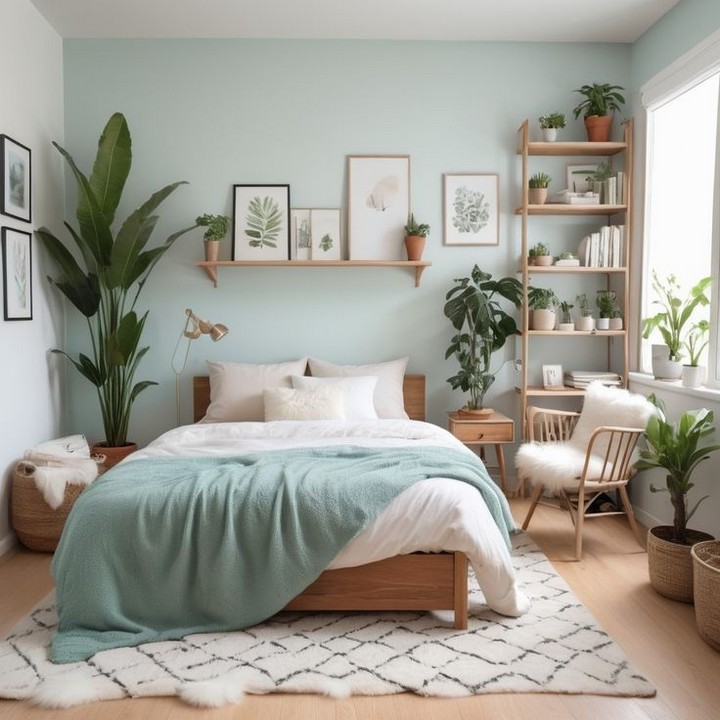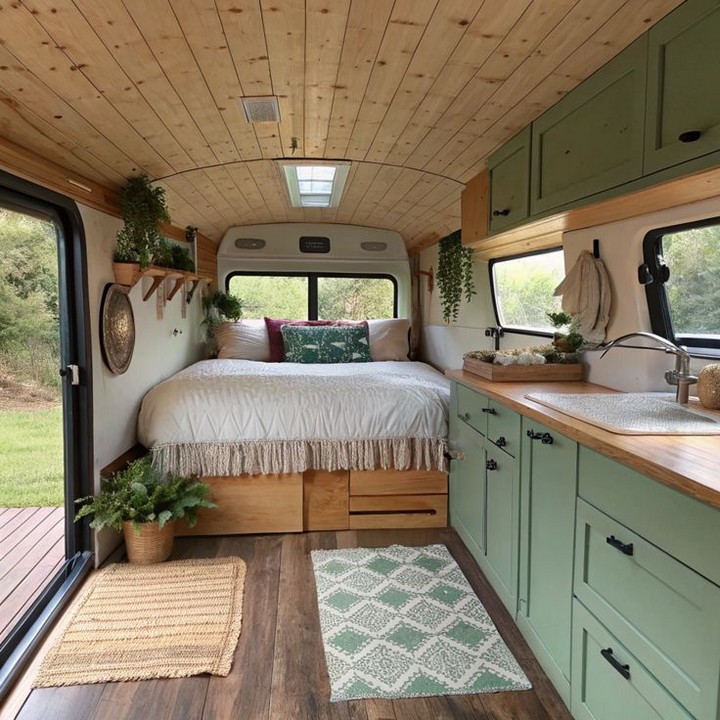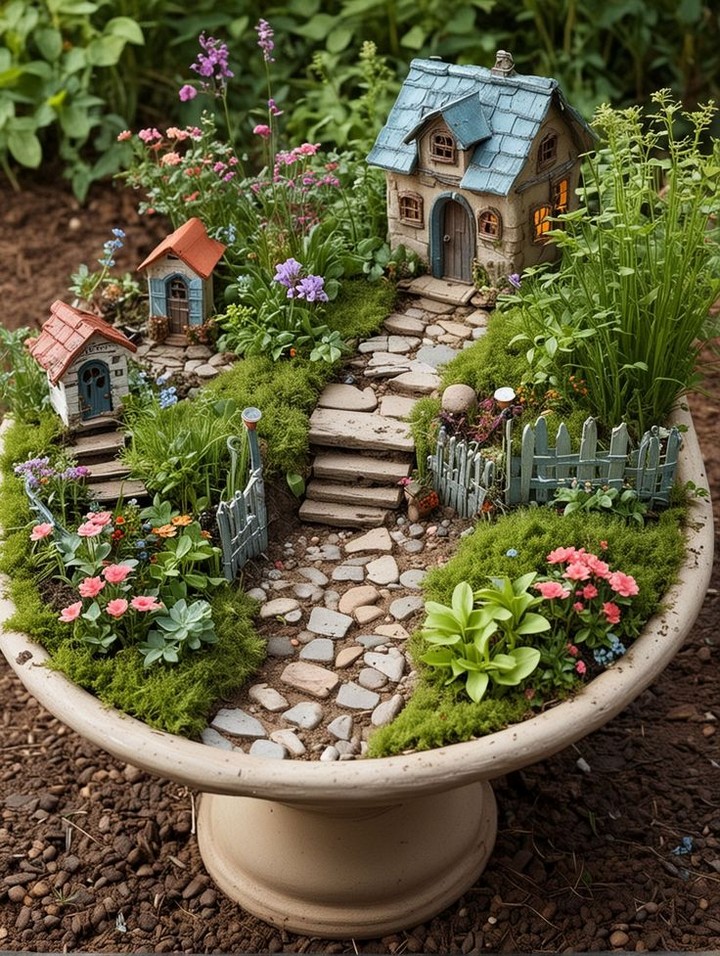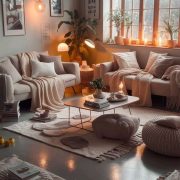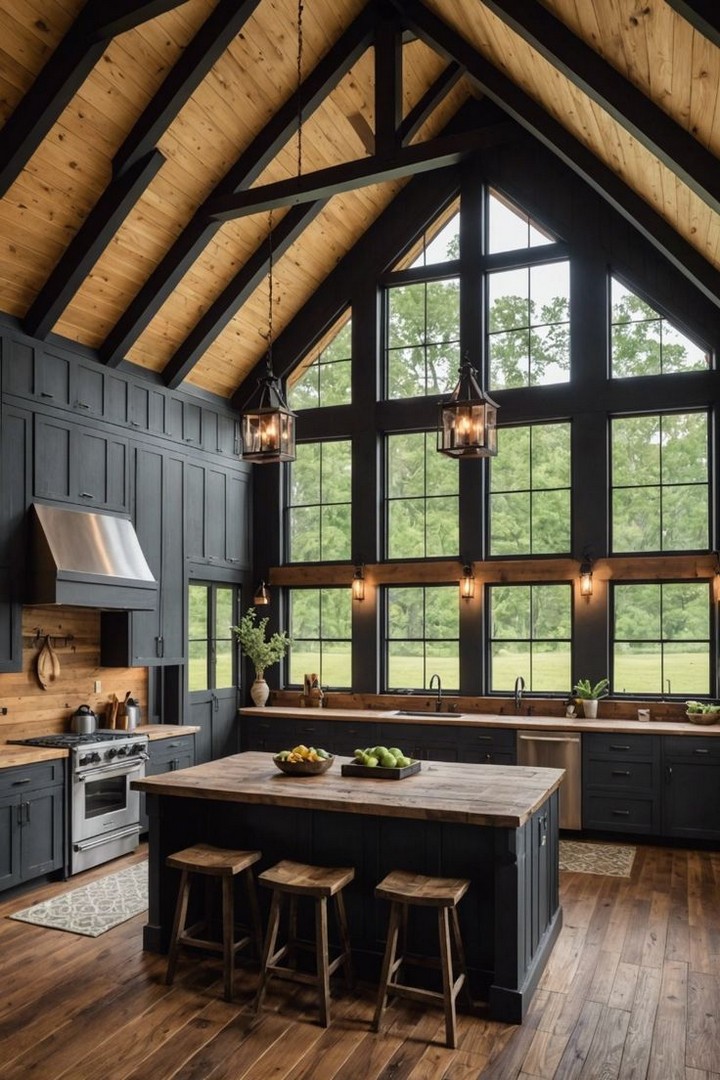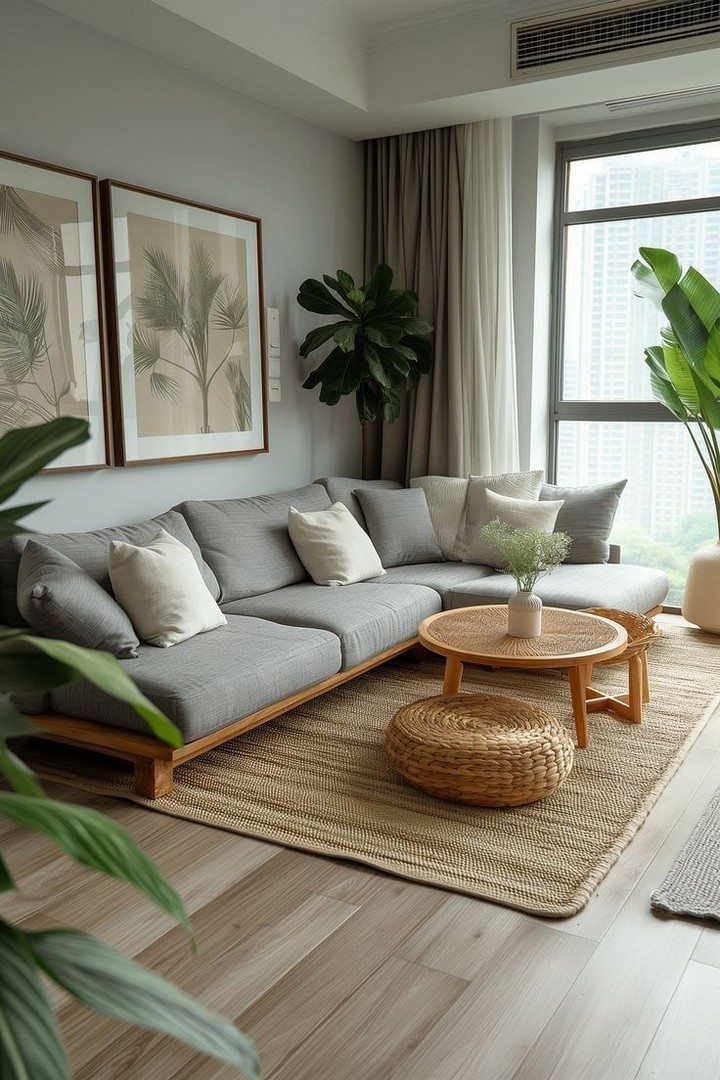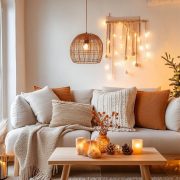In today’s home design landscape, the bedroom has evolved from merely a place to sleep into a multifunctional sanctuary that reflects personal style while maximizing functionality. Among the most sought-after design elements in contemporary bedrooms are built-in cabinets and natural wood accents a combination that merges practicality with aesthetic warmth. This comprehensive guide explores how to create a modern bedroom that incorporates these elements seamlessly, transforming your space into an organized, beautiful retreat that stands the test of time.
Among the top trends redefining contemporary interior design is the integration of built-in cabinets and wood accents in bedroom spaces. This approach not only optimizes storage and layout but also elevates the room’s overall visual appeal.
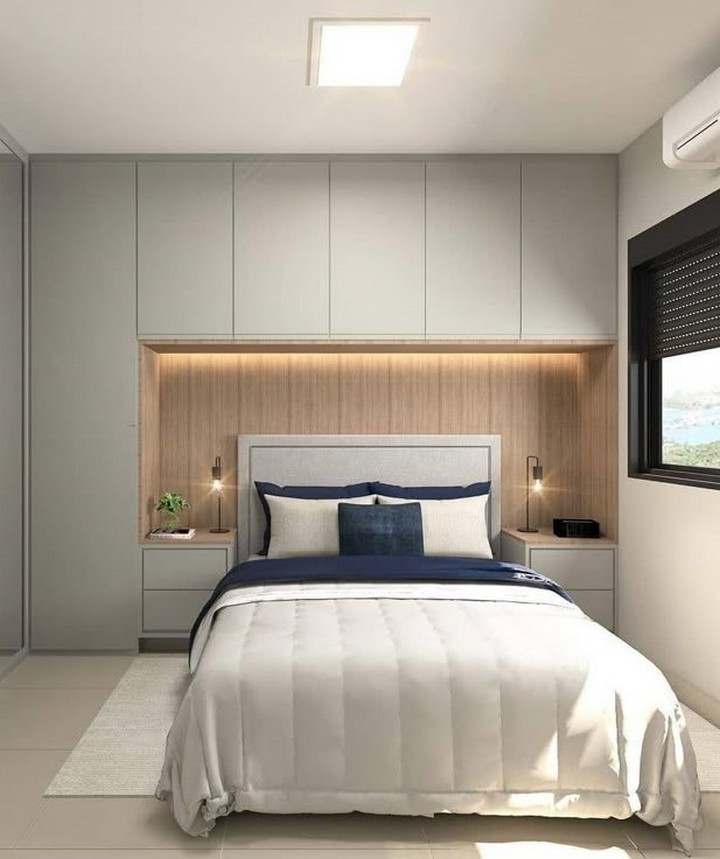
Whether you’re designing a new bedroom or renovating an existing one, incorporating these modern elements can create a timeless, cozy, and streamlined environment. This article dives deep into the appeal, functionality, and aesthetic value of modern bedrooms with built-in cabinetry and natural wood finishes, helping you envision and craft a space that resonates with both beauty and purpose
The Appeal of Modern Bedrooms with Built-In Storage
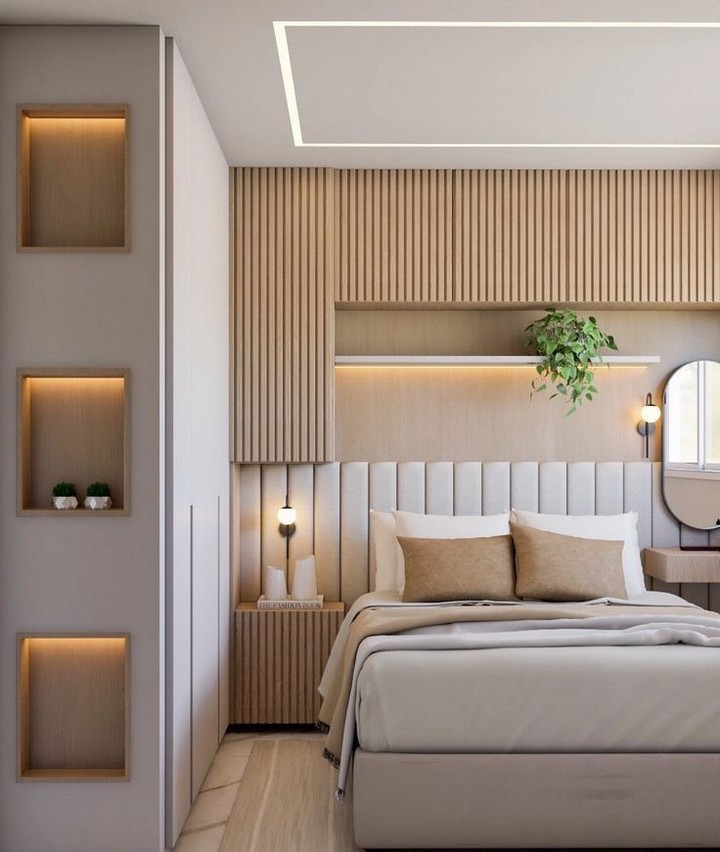
Modern bedroom design emphasizes clean lines, clutter-free spaces, and a harmonious balance between form and function. Built-in cabinets represent the epitome of this philosophy, offering tailored storage solutions that maximize space efficiency while maintaining visual cohesion.
Why Built-In Cabinets Are Transforming Modern Bedrooms
Built-in cabinets differ significantly from freestanding furniture in several key ways:
- Space Optimization: Built-ins utilize awkward corners, sloped ceilings, and wall recesses that would otherwise remain unused.
- Visual Continuity: By integrating with the architecture, built-ins create a seamless aesthetic that makes rooms appear larger and more cohesive.
- Customization: Unlike mass-produced furniture, built-ins can be designed to exact specifications, accommodating unique storage needs and spatial constraints.
- Investment Value: Quality built-ins are considered permanent improvements that can increase a home’s resale value.
A 2023 National Association of Home Builders survey revealed that 78% of homebuyers consider built-in storage a desirable or essential feature in primary bedrooms—a significant increase from 65% just five years earlier.
Incorporating Wood Accents: The Natural Element
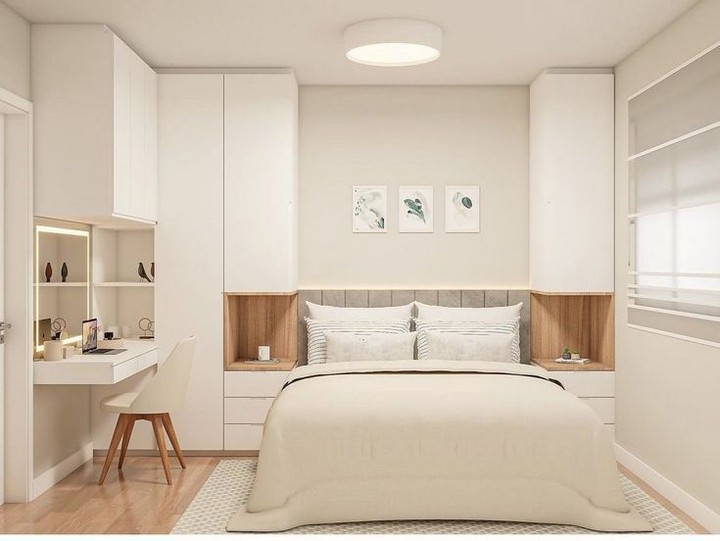
While modern design often embraces minimalism, the incorporation of wood adds essential warmth and texture that prevents spaces from feeling sterile or impersonal. This juxtaposition of sleek, contemporary elements with natural materials creates a balanced atmosphere that feels both current and timeless.
Benefits of Wood Elements in Modern Bedrooms
- Biophilic Connection: Wood elements satisfy our innate desire to connect with nature, potentially improving well-being and sleep quality.
- Tactile Interest: Natural wood grain provides visual and tactile variety in otherwise smooth, uniform spaces.
- Acoustic Properties: Wood can help dampen sound, creating a quieter, more peaceful sleeping environment.
- Versatility: From pale ash to rich walnut, wood can complement virtually any color scheme or design aesthetic.
Research published in the Journal of Environmental Psychology suggests that rooms with visible wood elements can reduce stress levels and improve cognitive performance—benefits particularly valuable in spaces dedicated to rest and rejuvenation.
Design Approaches for Modern Bedrooms with Built-In Cabinets
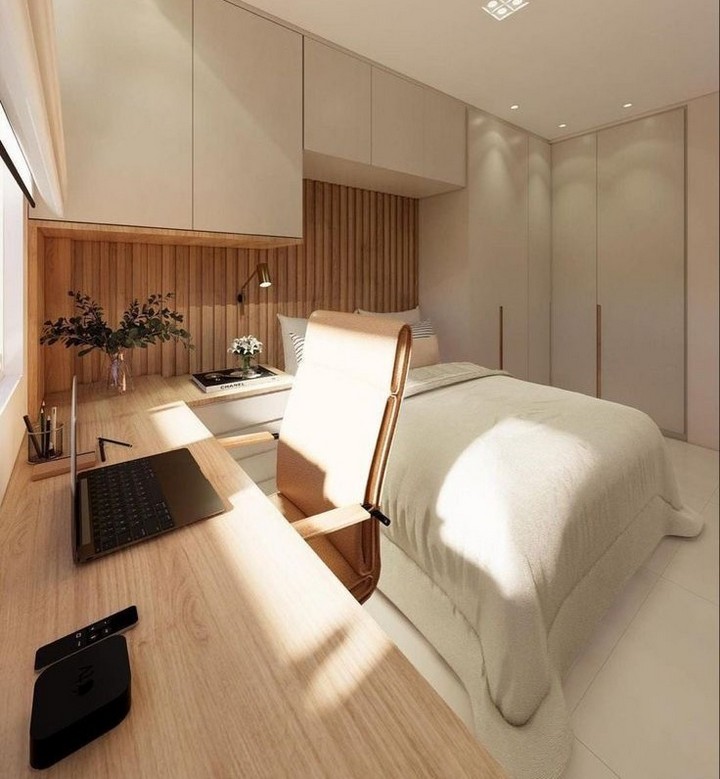
Minimalist Approach
The minimalist approach emphasizes clean lines, hidden storage, and an absence of visual clutter. In this design philosophy:
- Built-in cabinets feature flush doors without visible hardware
- Storage is concealed behind seamless panels that blend with walls
- Wood accents are used sparingly as statement elements
- Color palettes remain neutral with perhaps one accent shade
- Lighting is integrated rather than decorative
This approach works particularly well in smaller bedrooms where visual simplicity creates a sense of spaciousness and tranquility.
Scandinavian-Inspired
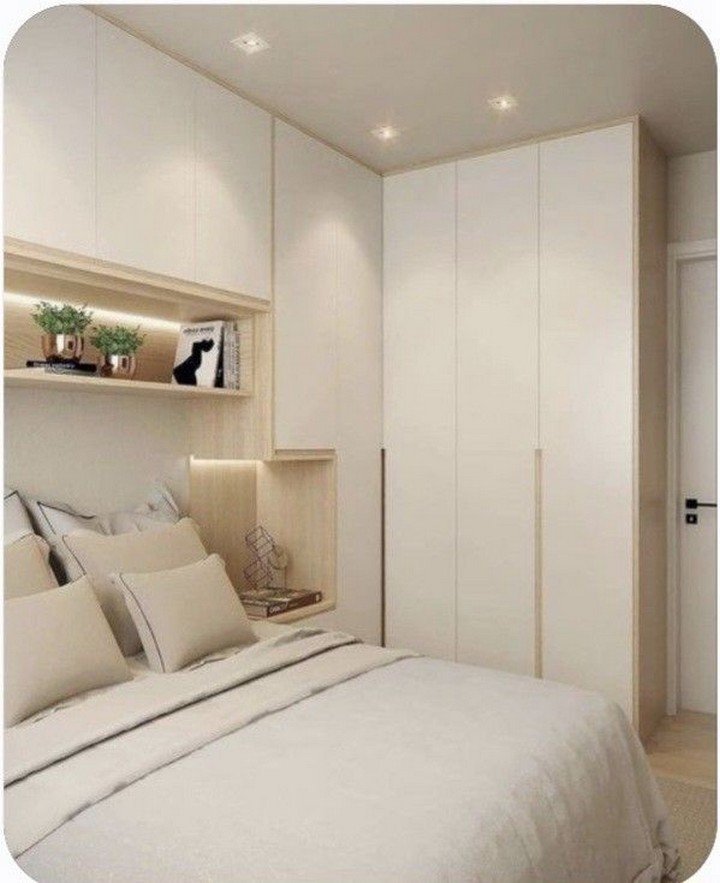
Scandinavian design merges functionality with coziness—a concept captured in the Danish word “hygge”:
- Light woods like birch, pine, or ash dominate
- Built-ins incorporate open and closed storage options
- Textural elements like wool, linen, and sheepskin add warmth
- Color schemes center around whites, grays, and pale blues
- Natural light is maximized, with minimal window treatments
This style excels in northern climates where maximizing light during darker months becomes essential for psychological well-being.
Industrial Modern
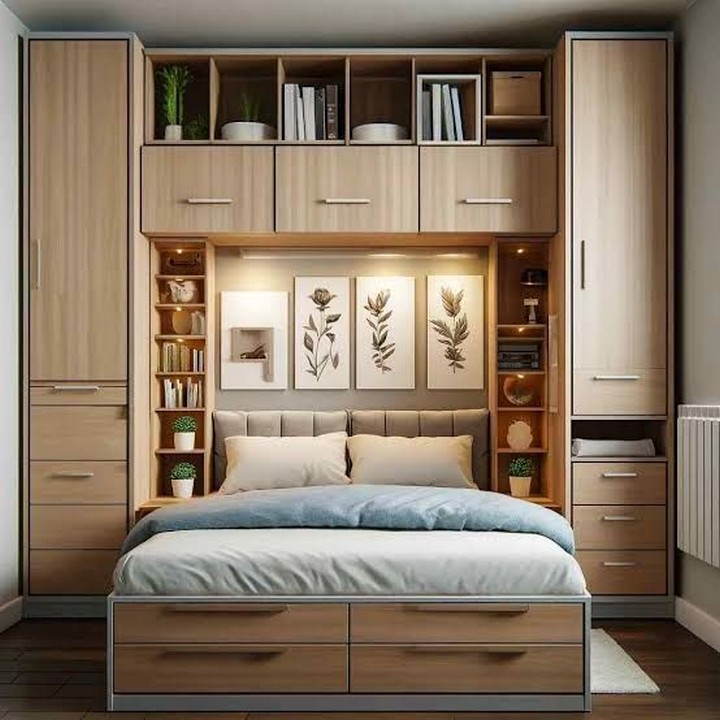
Industrial modern bedrooms incorporate raw materials and architectural elements:
- Exposed wood beams contrast with sleek built-in units
- Metal accents (blackened steel, brass) complement wood tones
- Built-ins might feature metal mesh or glass inserts for visual interest
- Reclaimed or distressed wood adds character and sustainability
- Concrete or brick elements provide textural contrast
This approach works beautifully in converted lofts, urban apartments, or homes with architectural heritage.
Mid-Century Modern Revival
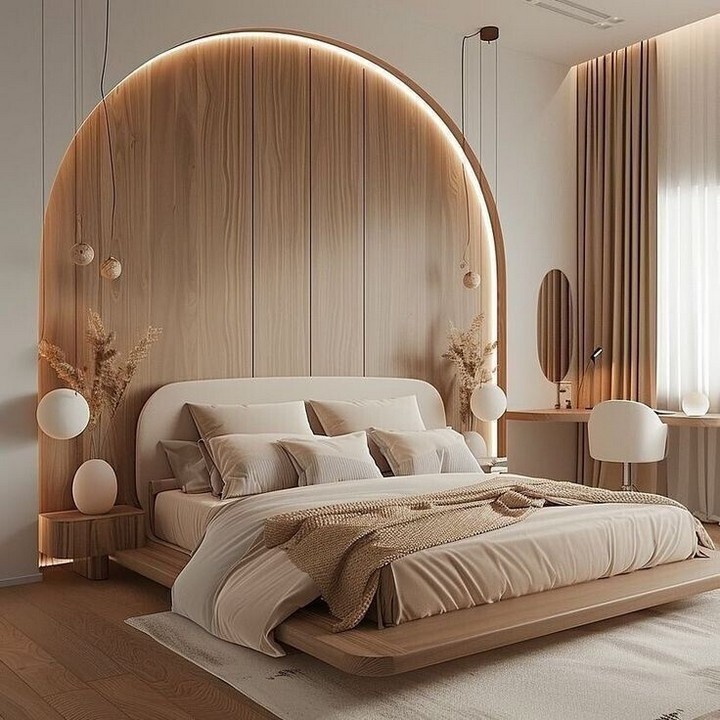
The enduring appeal of mid-century design translates perfectly to modern bedrooms:
- Walnut, teak, or cherry woods in warm tones
- Built-ins with distinctive geometric patterns or slatted elements
- Cantilevered or floating cabinetry that creates visual lightness
- Bold accent colors paired with wood tones
- Statement lighting that doubles as art
This style suits homeowners who appreciate design heritage while desiring contemporary functionality.
Smart Storage Solutions in Built-In Cabinetry
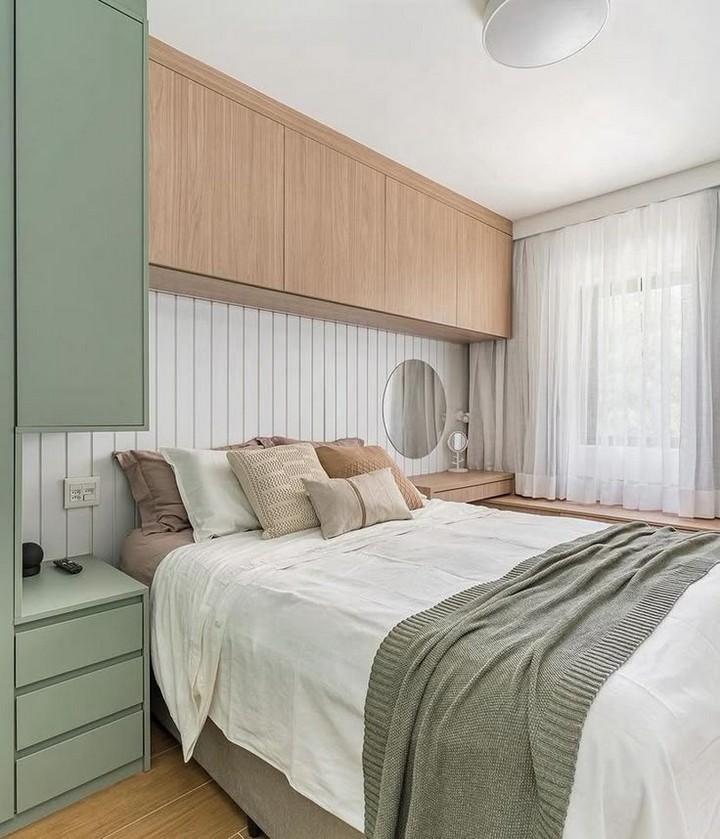
The true value of built-in cabinets lies in their ability to address specific storage challenges while maintaining aesthetic appeal.
Headboard Integration
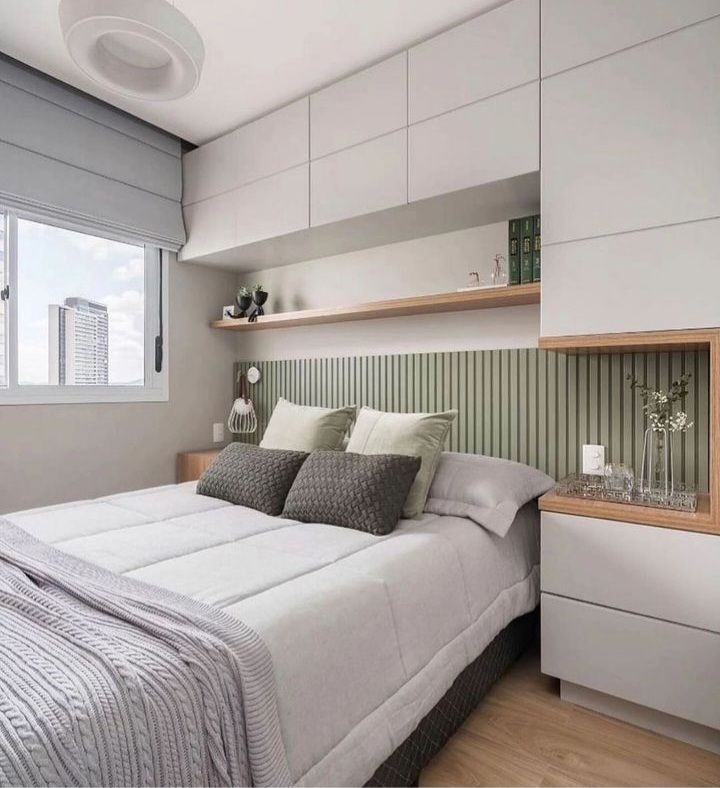
The area behind and surrounding the bed offers prime real estate for built-in storage:
- Integrated Nightstands: Built-in nightstands eliminate the need for additional furniture while providing dedicated storage for bedside essentials.
- Overhead Cabinets: Shallow cabinets above the bed can store less frequently used items or display decorative objects.
- Niche Lighting: Recessed lighting within headboard cabinetry creates ambiance while reducing the need for lamps.
- Media Integration: Hidden outlets and cable management systems accommodate technology discreetly.
A full-wall headboard installation can incorporate all these elements within a cohesive design statement.
Wall-to-Wall Wardrobes
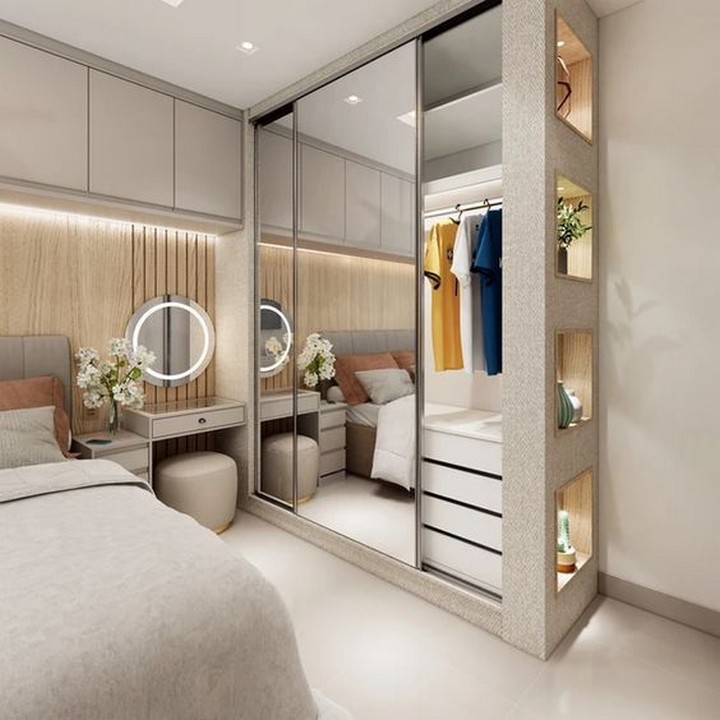
Built-in wardrobes maximize clothing storage while minimizing visual footprint:
- Floor-to-Ceiling Design: Utilizing the full vertical space makes rooms appear taller and provides maximum storage volume.
- Internal Configuration: Custom interiors with adjustable shelving, hanging sections, and specialized storage for shoes, accessories, and folded items.
- Mirrored Panels: Strategically placed mirrors on wardrobe doors expand visual space and enhance natural light.
- Integrated Dressing Area: Pull-out elements like jewelry trays, tie racks, or a fold-down ironing board create a complete dressing station.
Interior designers recommend allocating approximately 24 inches of hanging space per person for everyday clothing, with additional space for seasonal items.
Window Seat Storage
Window areas represent prime opportunities for built-in storage with additional functionality:
- Reading Nook: A cushioned window seat with built-in bookshelves creates a dedicated reading area.
- Hinged Lid Storage: The seat itself can lift to reveal deep storage for bulky items like extra bedding.
- Flanking Cabinets: Vertical cabinets on either side of windows frame the view while providing additional closed storage.
- Display Areas: Open shelving around windows showcases personal items while maintaining the practical benefits of built-ins.
This approach works particularly well in bedrooms with bay windows or architectural projections.
Wood Accent Applications in Modern Bedrooms
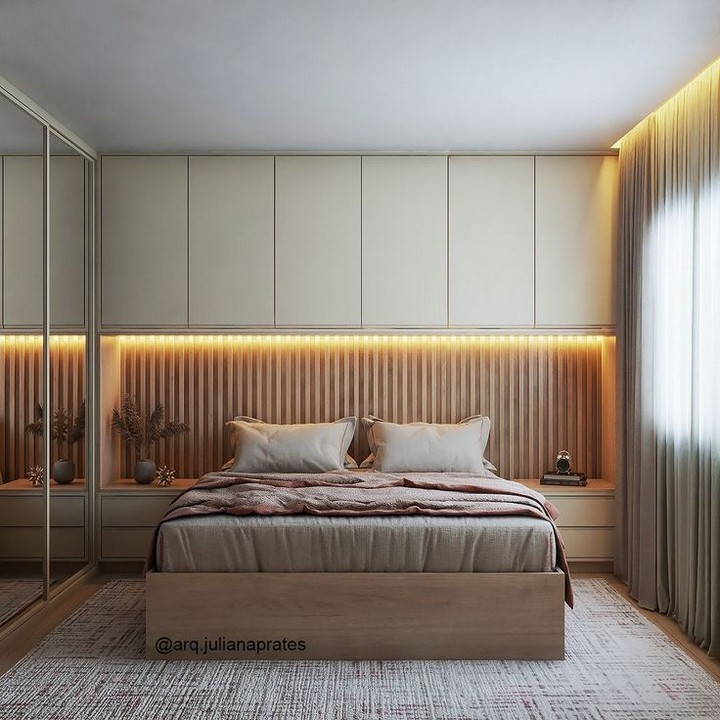
Wood elements add warmth, texture, and natural beauty to modern bedrooms in numerous ways:
Architectural Elements
- Exposed Beams: Original or decorative ceiling beams add structural interest and traditional character.
- Wood Paneling: Modern interpretations of wall paneling using horizontal planks, geometric patterns, or slatted designs create dramatic focal points.
- Ceiling Treatments: Wood-clad ceilings defy expectations and add surprising warmth to contemporary spaces.
- Door and Window Frames: Substantial wood trim around openings adds architectural definition.
These elements work best when they complement rather than compete with built-in cabinetry.
Flooring Options
The foundation of any bedroom design, wood flooring provides countless options:
- Engineered Wide Planks: Contemporary installations favor wider boards (7+ inches) for fewer seams and more visible grain patterns.
- Herringbone or Chevron Patterns: These traditional installation methods are experiencing renewed popularity in modern contexts.
- Bleached or White-Washed Finishes: Lighter treatments brighten spaces while still showcasing wood’s natural texture.
- Mixed Materials: Wood flooring can transition to tile in adjoining bathrooms or dressing areas for practical zoning.
Advances in engineered wood products have made wood flooring viable even in previously challenging environments like humid climates or over radiant heating systems.
Furniture Integration
Even with built-ins handling most storage needs, select wood furniture pieces can enhance the design:
- Platform Beds: Low-profile beds with wood frames complement built-in surrounds.
- Accent Chairs: A single wood-framed chair can serve as both functional seating and sculptural element.
- Floating Desks: Wall-mounted work surfaces extend from built-in units for occasional home office use.
- Bench Seating: A simple wood bench at the foot of the bed adds functionality without visual weight.
These pieces work best when they echo the wood tones and design language of the built-in elements for coherence.
Material Selection and Sustainability Considerations
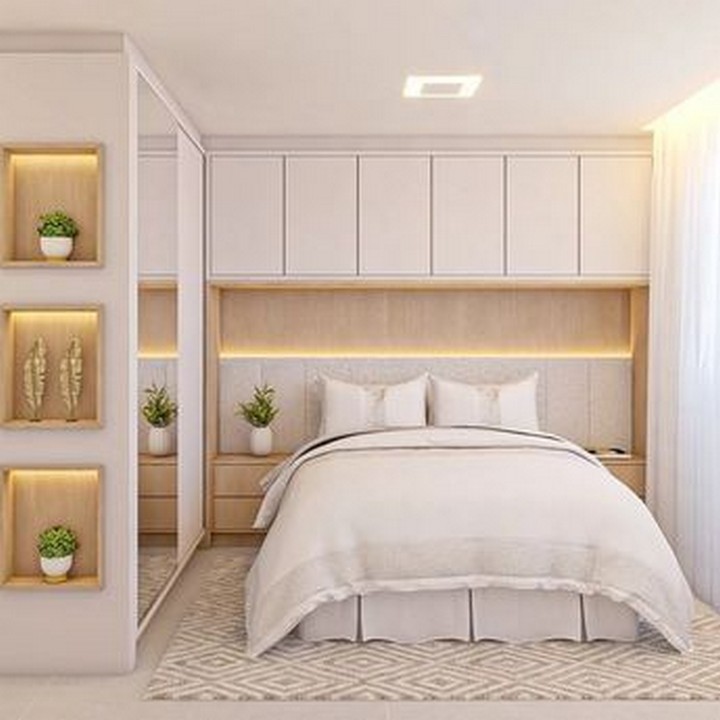
Wood Species Selection
The choice of wood significantly impacts both aesthetics and performance:
- Oak: Available in white (lighter) or red (warmer) varieties, oak offers pronounced grain patterns and excellent durability.
- Maple: With its subtle grain and lighter color, maple provides a more uniform appearance suitable for contemporary designs.
- Walnut: Rich, chocolate-brown tones with occasional purple undertones create sophisticated, luxurious environments.
- Ash: Similar in grain to oak but lighter in color, ash accepts stains well for customized appearances.
- Pine: More affordable but softer, pine works well when a more casual or rustic element is desired.
Designers increasingly pair multiple wood species within a single room, using contrast to highlight architectural features or create visual hierarchy.
Sustainable Sourcing
Environmental considerations have become paramount in modern design:
- FSC Certification: The Forest Stewardship Council certification ensures wood comes from responsibly managed forests.
- Reclaimed Materials: Salvaged wood from old buildings adds character while reducing environmental impact.
- Local Sourcing: Choosing regionally harvested woods reduces transportation emissions and supports local economies.
- Alternative Materials: Bamboo, cork, and other rapidly renewable materials offer wood-like aesthetics with improved sustainability profiles.
Consumers increasingly prioritize these considerations, with 67% of millennials willing to pay more for sustainable building materials according to recent market research.
Finishes and Treatments
The finishing approach significantly impacts both appearance and performance:
- Natural Oils: Products like tung oil or linseed oil penetrate wood fibers, enhancing natural beauty without plastic-like barriers.
- Water-Based Polyurethanes: Lower VOC (volatile organic compound) options provide durability with reduced environmental and health impacts.
- Cerused or Limed Finishes: These techniques highlight grain patterns by filling pores with white or light-colored materials.
- Matte Finishes: Less reflective finishes hide imperfections and create a more sophisticated, contemporary appearance than high-gloss alternatives.
Low-VOC and zero-VOC products have advanced significantly, now offering performance comparable to traditional finishes without harmful emissions.
Color Coordination with Wood Elements
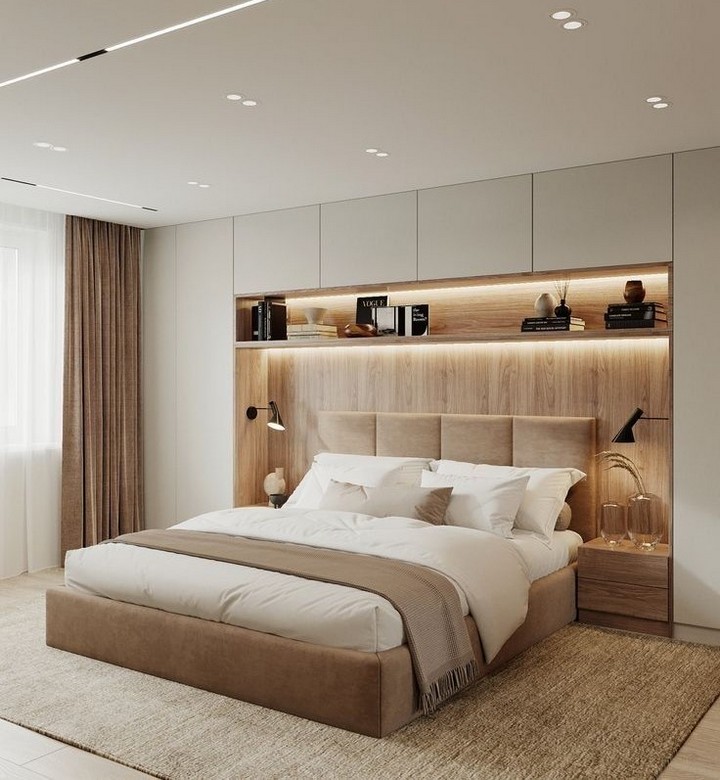
Successfully integrating wood tones requires thoughtful color selection throughout the bedroom:
Complementary Color Strategies
- Warm Woods (Cherry, Mahogany): Balance with cooler wall colors like sage green, slate blue, or lavender for contrast.
- Cool Woods (Ash, Maple): Enhance with warm neutrals like taupe, soft gold, or terracotta for harmony.
- Dark Woods (Walnut, Ebony): Pair with lighter wall colors to prevent spaces from feeling too heavy or closed-in.
- Light Woods (Birch, Ash): These versatile options work with nearly any color palette but particularly shine against deep, saturated accent colors.
Paint manufacturers now often suggest coordinating colors specifically formulated to complement popular wood species.
Texture and Material Pairings
Wood elements interact with other materials in the bedroom to create cohesive environments:
- Metal Accents: Brass or gold tones warm up spaces and complement most woods; blackened or brushed steel creates contemporary contrast.
- Natural Textiles: Linen, cotton, and wool in complementary tones add softness to wood’s hardness.
- Glass and Mirror: Reflective surfaces expand space and lighten the visual weight of wood elements.
- Stone Surfaces: Marble, quartz, or concrete provide sophisticated contrast to wood’s organic nature.
The most successful designs limit material palettes to 3-4 primary elements to avoid visual confusion.
Lighting Considerations for Wood and Built-Ins
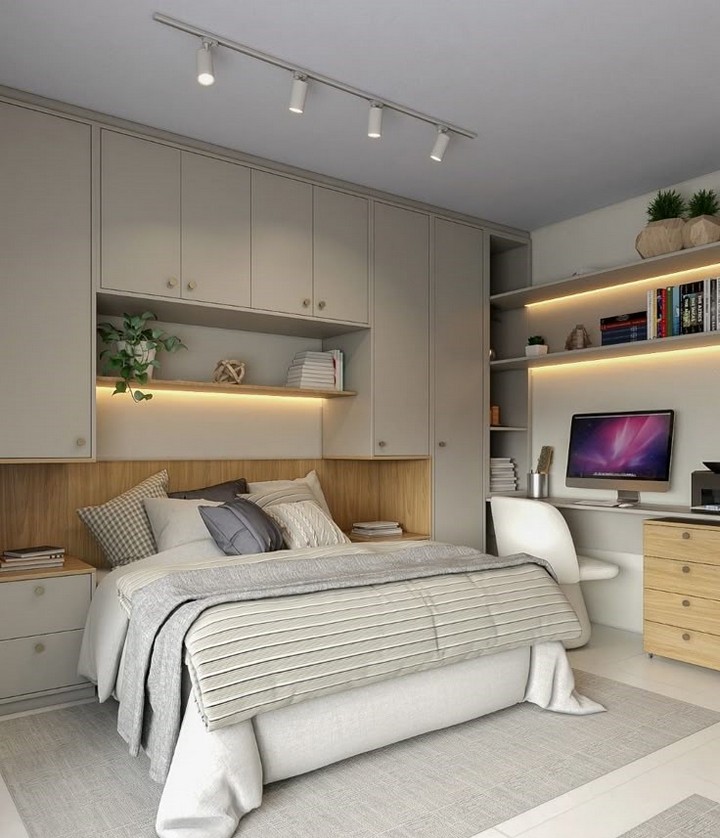
Proper lighting transforms both the functionality and appearance of wood-accented bedrooms:
Integrated Lighting Solutions
- LED Strip Lighting: Concealed LED strips above or below cabinetry create atmosphere while highlighting architectural features.
- Recessed Cabinet Lighting: Internal lighting transforms closed storage into display space when doors are open.
- Puck Lights: Small, circular fixtures provide task lighting in specific areas like closet interiors or reading nooks.
- Smart Lighting: Programmable systems adjust color temperature and brightness throughout the day to support circadian rhythms.
Energy-efficient LED technology allows for creative lighting placement without concern for bulb replacement or excessive heat generation.
Highlighting Wood Features
Strategic lighting enhances wood’s natural beauty:
- Directional Spotlights: Focused beams accentuate textural elements like wood paneling or beams.
- Wall Washers: Even illumination down vertical surfaces showcases wood grain without harsh shadows.
- Ambient Lighting: Softer, diffused lighting creates a warm glow that enhances wood’s natural warmth.
- Color Temperature: Lighting between 2700K-3000K (warm white) typically best complements wood tones.
Lighting designers recommend layering multiple light sources at different heights for the most flattering environment.
Practical Implementation: Working with Professionals
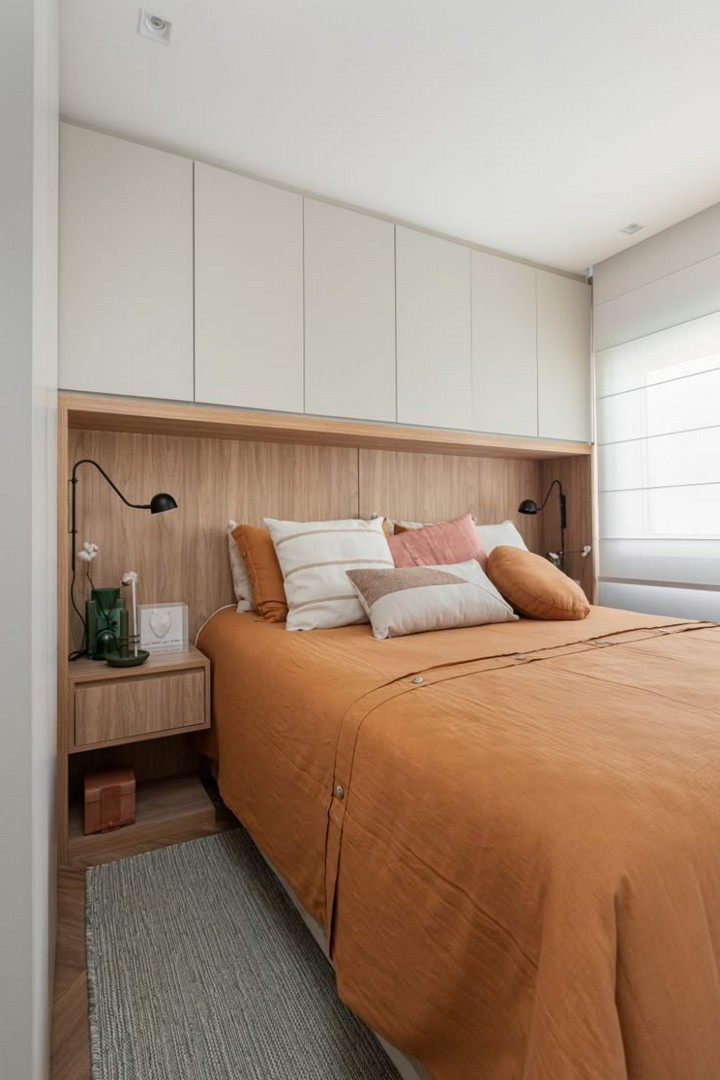
Finding the Right Cabinetmaker
Built-in cabinets represent a significant investment requiring specialized expertise:
- Portfolio Evaluation: Review past projects specifically focusing on bedroom installations.
- Material Knowledge: Verify experience with your preferred wood species and finishing techniques.
- Technical Capabilities: Confirm ability to handle special features like integrated lighting or custom hardware.
- Communication Style: Choose professionals who listen carefully and translate your needs into practical solutions.
Custom cabinetry typically costs 30-50% more than mass-produced alternatives but offers significantly better space utilization and longevity.
Design Collaboration Process
The most successful projects follow a structured development process:
- Needs Assessment: Comprehensive inventory of storage requirements and functional priorities.
- Spatial Planning: Accurate measurements and consideration of architectural features.
- Concept Development: Preliminary sketches exploring multiple design approaches.
- Material Selection: Samples of woods, finishes, hardware, and complementary materials.
- Detailed Drawings: Precise plans including dimensions, electrical requirements, and construction details.
- Timeline Development: Realistic scheduling accounting for ordering, fabrication, and installation phases.
Most bedroom built-in projects require 8-12 weeks from design approval to completion, with actual installation typically taking 3-5 days.
Maintenance and Longevity
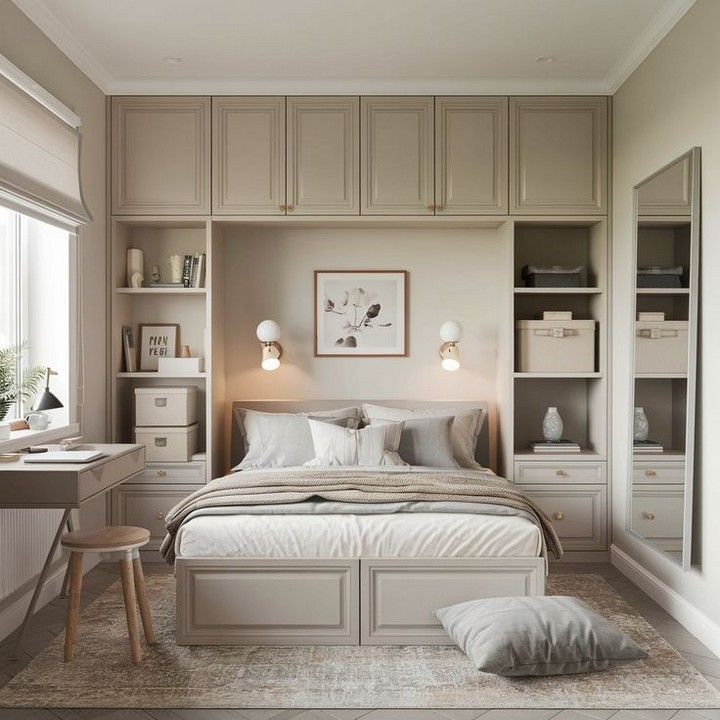
Quality built-ins and wood elements should last decades with proper care:
Preserving Wood Finishes
- Humidity Control: Maintain bedroom humidity between 30-50% to prevent wood expansion and contraction.
- UV Protection: Use window treatments to limit direct sunlight exposure that can fade and damage wood over time.
- Cleaning Protocols: Dust regularly with microfiber cloths; clean with products specifically formulated for finished wood.
- Periodic Refreshing: Apply conditioning products annually to nourish wood and maintain finish integrity.
Climate control systems with humidity regulation provide the most consistent environment for wood preservation.
Hardware Maintenance
The mechanical elements of built-ins require periodic attention:
- Hinge Adjustment: Cabinet doors may need realignment as house settling occurs.
- Drawer Slide Lubrication: Silicone-based products maintain smooth operation without attracting dust.
- Handle Tightening: Check and tighten hardware fasteners annually to prevent damage to wood surfaces.
- Replacement Planning: Keep records of hardware specifications for eventual replacement of worn components.
Quality hardware typically carries warranties of 10-25 years, with European brands often offering the longest coverage periods.
Budget Considerations and Investment Value
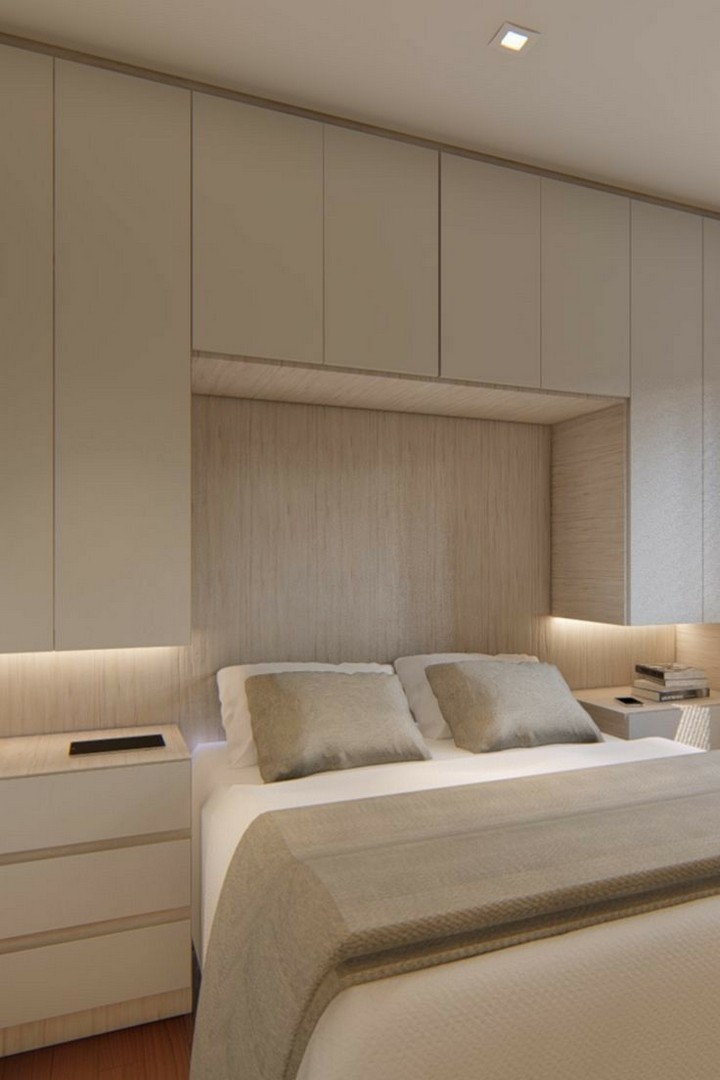
Cost Factors for Built-In Cabinetry
Several variables influence the final investment required:
- Material Quality: Solid wood construction costs significantly more than veneer-covered composites.
- Design Complexity: Simple, rectilinear designs require less labor than curved or intricate installations.
- Hardware Selection: Soft-close mechanisms, specialized organizers, and designer handles add substantial costs.
- Finishing Level: Multi-step finishing processes with hand-rubbed applications increase labor expenses.
- Installation Challenges: Existing conditions like uneven walls or floors may require additional preparation.
National averages suggest bedroom built-ins typically range from $300-$900 per linear foot depending on these factors.
Return on Investment
Well-executed built-ins contribute to property value:
- Appraisal Impact: Custom storage solutions typically return 70-80% of their cost at resale.
- Marketing Advantage: Real estate listings featuring built-ins attract more initial interest from buyers.
- Buyer Perception: Quality cabinetry creates an impression of overall home quality that influences purchase decisions.
- Longevity Benefit: Unlike furniture that requires replacement, built-ins typically remain functional for decades.
Real estate professionals report that master bedrooms with custom storage solutions sell 28% faster than comparable properties without these features.
Contemporary Trends in Bedroom Cabinetry and Wood Accents
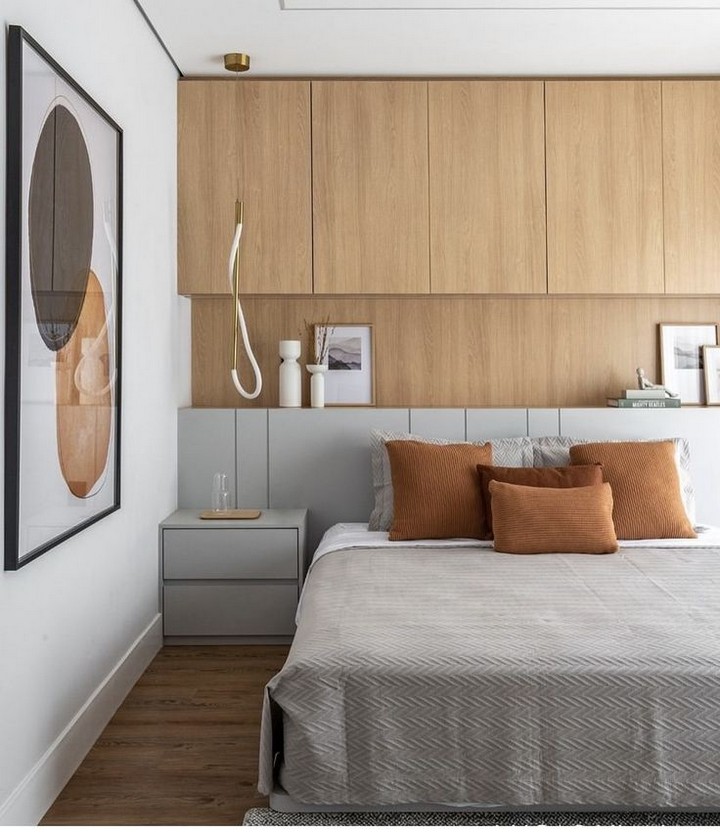
Current Design Directions
Several trends currently dominate the modern bedroom landscape:
- Mixed Materials: Combining wood with metal, stone, or glass creates depth and visual interest.
- Textural Contrast: Juxtaposing smooth, flat panels with highly textured wood elements provides sophisticated dimension.
- Integrated Technology: Charging stations, concealed outlets, and smart home controls embedded within cabinetry.
- Biophilic Elements: Increased incorporation of living plants and natural materials for well-being benefits.
- Multifunctional Spaces: Bedroom designs accommodating occasional work-from-home needs without compromising relaxation.
Design forecasters predict these trends will continue evolving toward even greater personalization and wellness orientation.
Emerging Materials and Techniques
Innovation continues to expand design possibilities:
- Thermally Modified Woods: Heat-treated domestic species offering improved stability and exotic appearances.
- Alternative Veneers: Materials like bamboo, cork, and agricultural waste products providing sustainable wood-like aesthetics.
- Advanced Joinery: Traditional woodworking techniques executed with modern precision for furniture-quality built-ins.
- Modular Systems: Semi-custom components that offer built-in aesthetics with greater flexibility for future modifications.
These advances make sophisticated designs more accessible across broader price points than previously possible.
Creating Your Perfect Modern Bedroom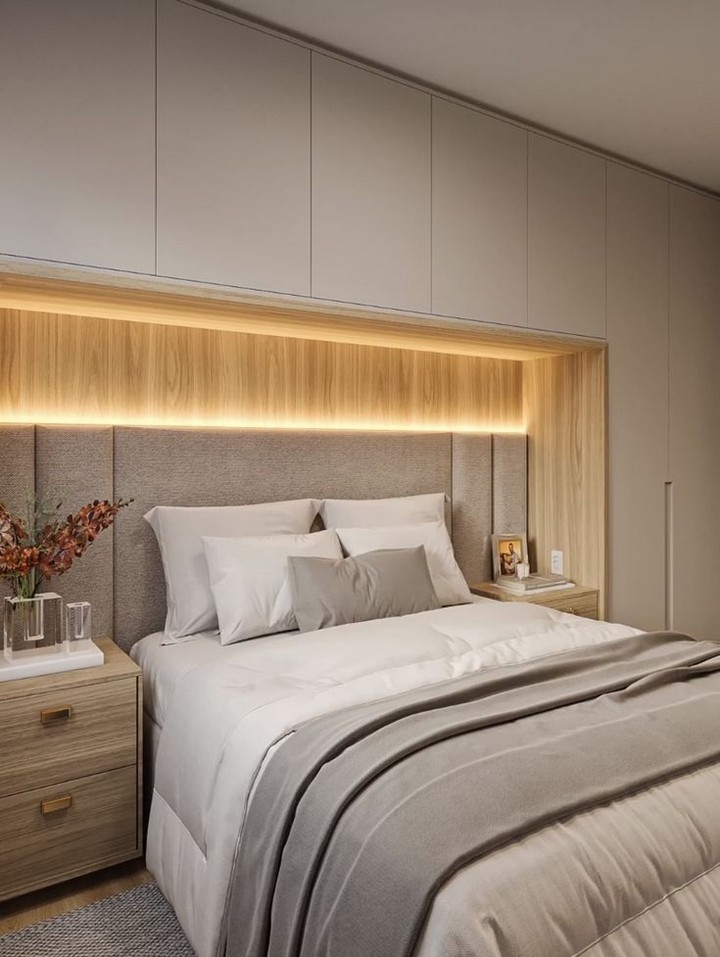
The integration of built-in cabinets with wood accents represents one of the most effective approaches to creating a modern bedroom that balances aesthetic appeal with practical functionality. By carefully considering design style, storage needs, material selection, and professional partnerships, homeowners can create spaces that not only meet immediate needs but also provide lasting value and enjoyment.
The bedroom, as our most personal space, deserves thoughtful design attention. Built-in solutions tailored to individual requirements eliminate daily frustrations while creating visual harmony. Wood elements connect us to the natural world, creating environments conducive to rest and rejuvenation. Together, these elements create bedrooms that truly serve as sanctuaries from our increasingly busy lives.
Have you incorporated built-in cabinets or wood accents in your bedroom? We’d love to see your creative solutions and hear about your experiences. Share photos in the comments below, or tell us about challenges you’ve overcome in your own bedroom design journey.
Planning a bedroom renovation? Save this article for reference, and consider scheduling consultations with several cabinetmakers to explore options for your specific space. The perfect combination of functionality and beauty awaits—your personal bedroom sanctuary is just a design project away.

